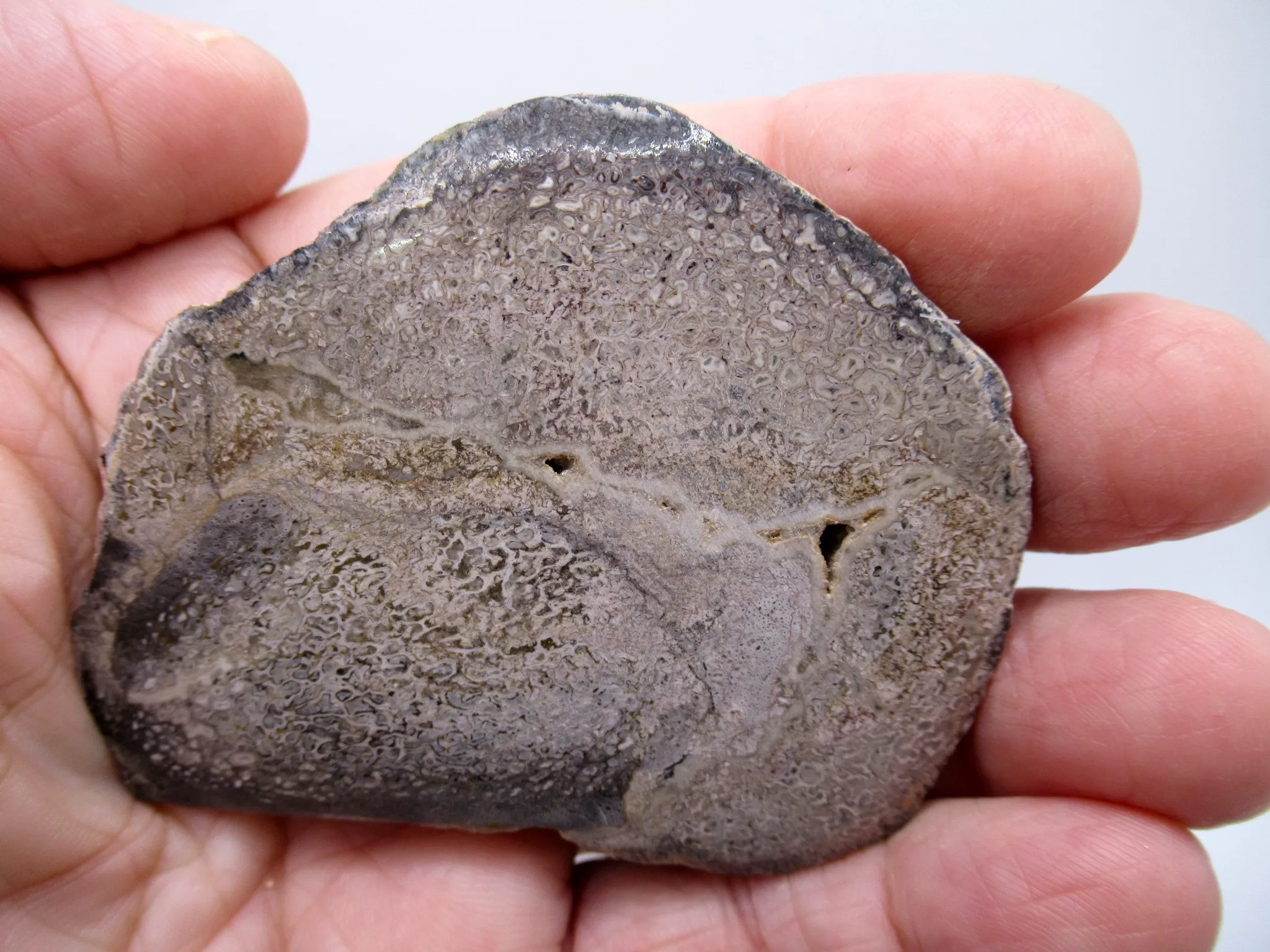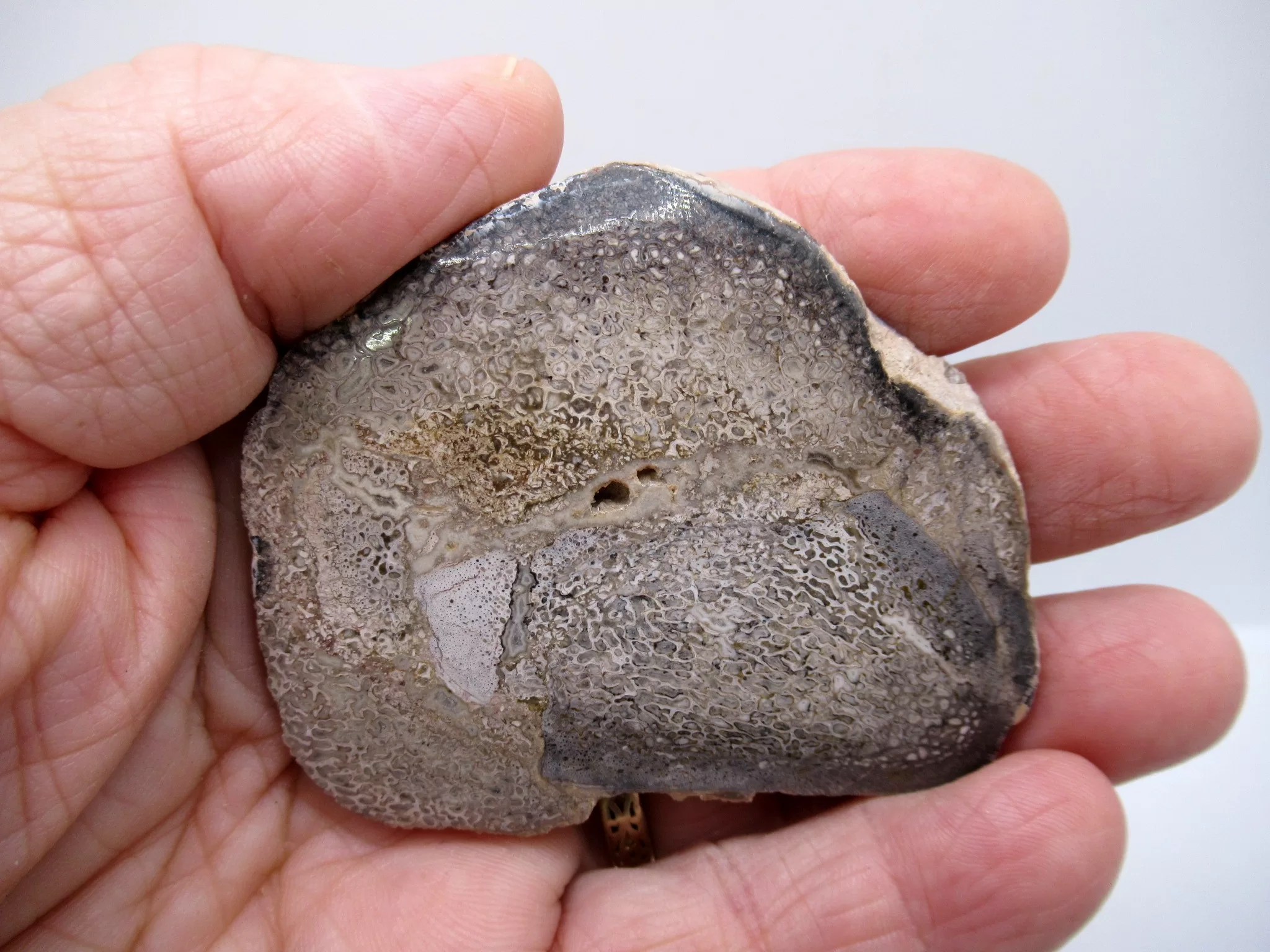Description
- Polished Dinosaur Bone Slab
- Early Cretaceous
- High Atlas Region, Morocco N. Africa
- This very nice, highly detailed cross-section of dinosaur bone measures 2.83″ wide. This specimen shows nice cell structures. The slab is predominantly blacks, whites, grays and browns with some hints of greens. Very pretty!
- More Dinosaur Fossils for Sale
Polished Dinosaur Bone – The “dinosaur bones” that you see here and in Museums aren’t really bones at all. Through the process of fossilization, ancient animal bones are turned into rock.
Scholarly descriptions of what would now be recognized as dinosaur bones first appeared in the late 17th century in England. Part of a bone, now known to have been the femur of a Megalosaurus, was recovered from a limestone quarry at Cornwell near Chipping Norton, Oxfordshire, in 1676.
The fragment was sent to Robert Plot, Professor of Chemistry at the University of Oxford and first curator of the Ashmolean Museum, who published a description in his The Natural History of Oxford-shire (1677). He correctly identified the bone as the lower extremity of the femur of a large animal, and recognized that it was too large to belong to any known species. He, therefore, concluded it to be the femur of a huge human, perhaps a Titan or another type of giant featured in legends.
Edward Lhuyd, a friend of Sir Isaac Newton, published Lithophylacii Britannici ichnographia (1699), the first scientific treatment of what would now be recognized as a dinosaur when he described and named a sauropod tooth, “Rutellum impicatum”, that had been found in Caswell, near Witney, Oxfordshire.






